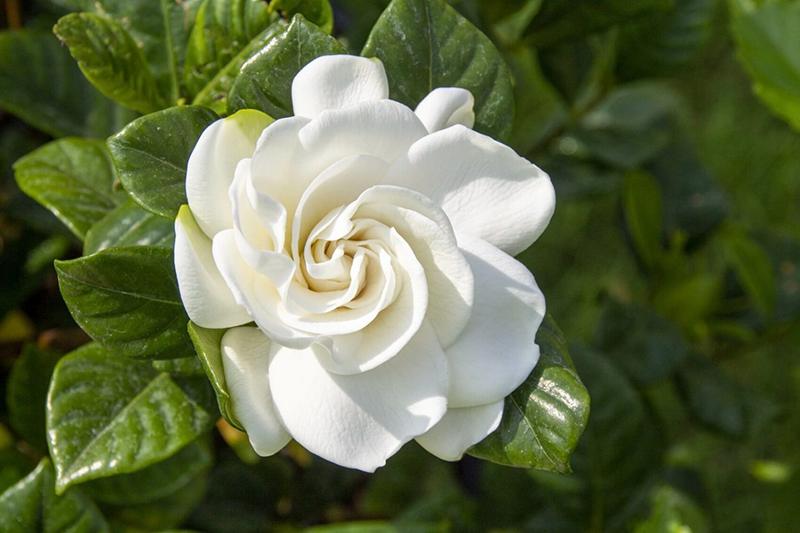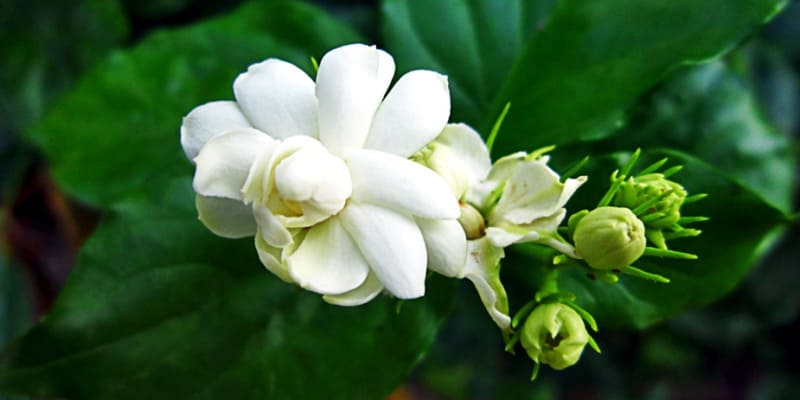Jasminum grandiflorum, also known as the Grand Duke of Tuscany jasmine or Spanish jasmine, is a cherished species in the world of ornamental plants and perfumery. Native to the Mediterranean region, this climbing vine or shrub is renowned for its large, fragrant white flowers and its ability to elevate any garden or indoor space with its alluring scent. This article provides a detailed overview of Jasminum grandiflorum, including its botanical characteristics, ideal growing conditions, care and maintenance, uses, and propagation methods.
Botanical Characteristics
Appearance and Growth Habit
Jasminum grandiflorum is a semi-woody climbing vine or shrub that can reach heights of 10-15 feet (3-5 meters) when given proper support. The plant exhibits a lush green foliage with opposite, pinnate leaves consisting of 5-9 lance-shaped leaflets that are glossy and dark green. Its flowers are the main highlight, featuring large, star-shaped blooms that are white and highly fragrant. Each flower typically measures 1-2 inches (2.5-5 cm) in diameter, emitting a sweet and intense fragrance.

Soil and Climate Requirements
This jasmine species thrives in temperate to subtropical climates and can be grown in USDA zones 8-10. Jasminum grandiflorum prefers well-draining soil with a slightly acidic to neutral pH (6.0-7.0). It favors full sun to partial shade, although ample direct sunlight encourages optimal growth and flowering. Regular watering is essential to keep the soil consistently moist, but the plant should not be waterlogged.
Growing Conditions
Sunlight and Temperature
Jasminum grandiflorum requires full sun to partial shade to flourish. It benefits from at least 6 hours of direct sunlight each day. In cooler regions, the plant may need to be grown in a container and brought indoors during winter to protect it from frost. It can tolerate temperatures down to about 20°F (-6°C), but prolonged exposure to freezing conditions can damage the plant.
Soil and Watering
The ideal soil for Jasminum grandiflorum is rich, loamy, and well-draining. A soil mix enriched with organic matter will support healthy growth. Consistent watering is crucial, especially during dry periods. Ensure the soil remains moist but not saturated to prevent root rot and other moisture-related issues.
Care and Maintenance
Pruning and Fertilization
Pruning is essential for maintaining the shape and promoting vigorous growth and flowering. It is best to prune Jasminum grandiflorum in late winter or early spring before the new growth begins. Regular feeding with a balanced fertilizer or one specifically formulated for flowering plants helps support healthy development and abundant blooms.
Pests and Diseases
Jasminum grandiflorum may encounter common pests such as aphids, spider mites, and whiteflies. It is also prone to fungal issues in very humid conditions. Regular inspection and appropriate treatments, such as insecticidal soap or fungicides, can help manage these problems and keep the plant healthy.

Uses and Benefits
Perfume Industry
The highly fragrant flowers of Jasminum grandiflorum are highly valued in the perfume industry. The plant’s blooms are used to produce jasmine absolute, an essential ingredient in many luxurious perfumes due to its rich, sweet scent.
Traditional Medicine
In traditional medicine, jasmine has been used for its calming properties. Various cultures utilize it in remedies for different ailments, taking advantage of its therapeutic benefits.
Ornamental Value
Jasminum grandiflorum is an excellent choice for gardens and indoor spaces due to its striking appearance and delightful fragrance. It can be grown on trellises, arbors, and as ground cover or in containers, making it a versatile addition to any landscape.
Propagation Methods
Seed Propagation
Propagating Jasminum grandiflorum from seeds involves sowing them in a well-draining potting mix. Keep the seeds warm and moist until they germinate, which usually takes a few weeks.
Cutting Propagation
Softwood or semi-hardwood cuttings taken in late spring or summer are another method of propagation. To encourage rooting, use a rooting hormone and provide a humid environment until roots develop.
Layering
Layering involves burying a section of a stem while it is still attached to the parent plant, allowing it to root before being separated. This method can be particularly effective for creating new plants.
Conclusion
Jasminum grandiflorum, with its elegant white flowers and intoxicating fragrance, is a valuable addition to gardens and indoor spaces alike. Understanding its botanical characteristics, growing conditions, and care requirements ensures that you can successfully cultivate this stunning plant. Whether used for its beauty, fragrance, or traditional medicinal properties, Jasminum grandiflorum offers a range of benefits that make it a cherished choice among gardeners and horticulturists.
